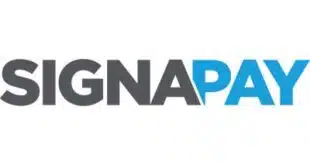Governments are moving closer to issuing digital money. That could introduce some benefits—but also many risks and complications.
Central bank digital currencies (CBDCs) are coming, slowly but inevitably. They can be retail (for use by consumers and businesses), wholesale (for use between financial institutions), or both. Evangelists enthuse they’ll improve money and domestic and cross-border payments. At this juncture, however, such compelling use cases are unclear.
Federal Reserve notes (cash) and reserves at the Fed are central-bank money, in other words, Fed liabilities. Banks already transact in central-bank money among themselves. The public primarily uses commercial-bank money.
Retail CBDCs enable consumers and businesses to hold, and transact in, electronic payment instruments—but in national unit accounts that are central-bank rather than commercial-bank labilities.
Launched in 2014, the first CBDC, Ecuador’s central bank’s digital dollar, was shuttered in 2018. The dinero electrónico failed because of its reliance on the state mobile network operator for distribution and because of distrust of the central bank.
Notwithstanding the dinero electrónico’s demise, central banks are increasingly keen on CBDCs. Their interest in the matter has been accelerated by such factors as the rise of cryptocurrencies, Facebook’s 2019 announcement of the stablecoin Libra (rebranded Diem), and the People’s Bank of China’s commitment to developing an e-yuan.
Debuting in October 2020, the Bahamas’ digital sand dollar was the second CBDC out of the gate. The Caribbean Central Bank’s digital dollar has been introduced in seven out of eight served island countries and territories. And Nigeria’s central bank has started issuing e-Naira.
What About the Fed?
Most of the world’s major central banks will follow suit. The highest-profile CBDC pilot these days is the PBOC’s e-yuan. It reports more than 140 million digital-wallets for managing e-yuan have been downloaded, 10 million acceptance-ready merchants, and 150 million transactions to date, totaling almost $10 billion.
To be sure, China’s central bank says it wants to improve payments efficiency beyond what Alipay, China Union Pay, and WeChat Pay have achieved. But an e-yuan could provide additional benefits for Beijing. In a Financial Times interview, the UK’s spy chief, Sir Jeremy Fleming, warned that the digital renminbi could be a tool to surveil users and exert control over global currency transactions.
The Fed has been studying the development of an electronic greenback. But the Fed is a creature of Congress. Fed chairman Jay Powell declared, “We would not proceed” adopting a digital dollar “without support from Congress … ideally … in the form of an authorizing law.”
Washington can ban private digital currencies or use regulation to tilt the playing field, either of which would suppress money-and-payments innovation.
Milton Friedman’s counsel a quarter century ago that the future of e-cash would depend on the private sector’s “flexibility to experiment, without broad interference by government” should inform Congressional policymakers. Ideally, CBDC legislation would provide legal and regulatory clarity, be technology-agnostic, and prohibit regulators from handicapping private digital currencies.
But the Fed isn’t of one mind. Powell remains undecided. Vice chair nominee Lael Brainard is a CBDC proponent. Governor Christopher Waller and former vice chair of supervision Randal Quarles are skeptical there’s a compelling need, noting the U.S payment system is already substantially digital and works well.
Waller and Quarles also argue that the pro forma arguments trotted out in a Fed e-dollar’s favor—that it’s necessary to promote financial inclusion and to defend King Dollar against a digital yuan—don’t bear scrutiny.
The percentage of unbanked American households has been falling, going from 8.2% in 2011 to 5.4% in 2019. Significantly, 75% of these households say they don’t want a bank account. Almost 10,000 banks and credit unions compete to serve Americans. Neobanks like Chime and Green Dot, and de facto banking from Square and PayPal, continue to make it ever easier to bank.
Design Choices
But if Washington wants to do more than recite financial-inclusion pieties, it would lower barriers to entry in financial services and repeal debit-interchange price controls. These moves would more effectively expand financial-services access than a Fed e-dollar.
Design choices will affect CBDCs’ utility and impact. CBDCs can be account- or token-based. Account-based systems would be easier to implement, whereas token-based systems should enjoy greater flexibility.
The banking and money system is a two-tier one. The Fed serves banks, and banks serve consumers and businesses. Champions of the idea that government should take a greater role in banking advocate the Fed should provide bank services to consumers and businesses directly, competing with commercial banks. Alternatively, as with physical cash, the Fed could rely on banks to distribute e-dollars.
CBDCs can be supported by permissioned-distributed, hybrid, or central electronic ledgers. Central banks will weigh tradeoffs differently and employ different architectures. No CBDC will be unpermissioned.
While the digital sand dollar is limited to domestic use, electronic dollars, euros, and pounds, probably won’t be. Most greenbacks circulate outside the United States. While an e-dollar won’t be anonymous, its value would likely be greater abroad.
A Fed e-dollar’s domestic impact likely would be modest. However, CBDCs could roil the cross-border payments market, making transfers faster, more convenient, and cheaper, thereby boosting demand.
A digital King Dollar may supplant weak national currencies and payment systems. If Venezuelans and Zimbabweans, using smart phones, can transact in e-dollars rather than bolivars and Zimbabwean dollars, respectively, many will, and will be better off for it.
Risky Business
Cheerleaders say central-bank money is less risky, but in countries like Venezuela and Zimbabwe, central-bank money is plenty risky. And, in the U.S., private digital currencies—backed one-to-one by dollars in FDIC-insured accounts and short-term, liquid securities—wouldn’t be materially riskier than Fed e-dollars.
Libertarians love payments anonymity. No CBDC, however, will be anonymous in the way cash is. For governments, that’s a plus. For consumers and businesses, not so much. Digital dollars and pounds, however, are likely to offer greater privacy protections than digital yuan.
CBDCs pose risks. They’ll be easier for consumers and businesses to hold and transact in than cash, and, therefore, will reduce banks’ assets and lending capacity. In a normal interest-rate environment, that wouldn’t be a big risk. Additionally, in uncertain times, there’s risk of capital flight from banks to CBDCs.
It’s too early to know how they’ll affect central banks’ ability to implement monetary policy. Advocates contend policy tools could be enhanced. With the elimination of physical cash, CBDCs would enable negative interest rates. Congress should take care to prevent the possibility of negative rates being designed into a Fed e-dollar. Enabling negative interest rates, thus punishing savers and causing malinvestment, is a bug, not a benefit.
CBDCs may have different velocities than cash. And competing private payment systems self-correct. Public systems are quite another matter.
Indeed, the biggest CBDC risk is that they could pre-empt or crowd out the development of competing private digital currencies. The Fed is the financial system’s paramount regulator and enjoys virtually unlimited resources. Commercial banks, fintechs, and payment networks will, consequently, be reluctant to compete against it.
Fed Governor Waller observes that “markets operate efficiently when private-sector firms compete to provide the highest-quality products to consumers and businesses at the lowest possible cost” and that “government should compete with the private sector only to address market failures.” There’s no obvious failure in payments and bank money.
Quarles, the former vice chair of supervision, warned “a Fed CBDC, or even plans for one, might deter private-sector innovation by effectively “occupying the field.”
A Level Field
Historically innovation in money and payments has been driven by private initiative, not by the state. In the 7th century, Chinese merchants introduced the first paper currency. It was Scottish banks that invented overdrafts, and multicolored and double-sided banknotes.
Financier Frank McNamara launched the first general-purpose payment card network, Diners Club. Banker Dee Hock was the father of the global bank card network, Visa. Banks built the global cross-border payment-messaging network Swift.
Peter Thiel and Max Levchin founded PayPal. Cryptocurrency pioneers Chris Larsen, Jed McCaleb, Vitalik Buterin, and Anatoly Yakovenko, didn’t work at the Treasury Department. Stablecoin development, too, has been spearheaded by private-sector capital and initiative from entrepreneurs like Circle’s Jeremy Allaire, Paxos’s Charles Cascarilla, Andrew Chang, and Richmond Two, and Tether co-founders and Mastercard Foundation alumni Brock Pierce and Craig Sellars, and entrepreneur Reeve Collins.
Leading CBDCs and stablecoins won’t be national silos. Eventually, they’ll interoperate, enabling instant cross-border value exchange through global clearinghouses, bilateral or multilateral connections, or both.
In “Denationalisation of Money: The Argument Refined: An Analysis of the Theory and Practice of Concurrent Currencies,” Freidrich Hayek advocated free trade in money for private and national currencies to be able to freely compete, subject to market discipline. Fed e-dollars, Citi e-dollars, Diem, ECB digital euros, Circle’s USDC, Tether’s USDT, et. al., vying for pride of place in e-wallets and different use cases, would foster innovation, with the market guiding development and picking winners and losers.
Best case, competing private and public money and payment systems operating on a level legal and regulatory playing field, will evolve, delivering ever-greater value.
—Eric Grover is principal at Intrepid Ventures, Minden, Nev.
A Quick Primer on Central Bank Digital Currencies
Central Bank Digital Currencies are digital tokens representing a national fiat currency. They are issued, as the name implies, by the nation’s central bank, which must maintain reserves against them. About 90 nations have at least looked into the technology, while nine have launched a CBDC, according to the Atlantic Council.
While CBDCs are stablecoins by definition (tethered to the value of a national currency), they differ from privately issued stablecoins (“The Price of Stability,” December) in that they may nor may not be created through a distributed ledger like a blockchain. Some experts, however, argue there’s little to be gained in managing a national digital currency through the public/private key pairs generated via a blockchain. “It’s unlikely a central bank would manage a currency in such a fashion,” says Tim Sloane, vice president, payments innovation, at Marlborough, Mass.-based Mercator Advisory Group.
While many countries have contemplated digital currencies for some time, observers say Facebook Inc.’s announcement of its Libra project in the summer of 2019 may have catalyzed research and development in a range of national governments. The project, which proposed a digital currency backed by bank deposits and short-term government securities, attracted immediate and withering criticism from banking regulators around the world, driving out many of the project’s original 27 corporate backers and forcing Facebook (now Meta) to rename and redesign the project.
The currency, now known as Diem, may have assumed far more modest goals, but some observers say it has left a legacy among the world’s central banks, many of which have stepped up their investigation of CBDCs. Just last year, the number of countries in various stages of implementing or investigating the technology grew from 74 in April to 89 in December, according to the Atlantic Council. “Facebook launching Libra started it all,” says Talie Baker, strategic advisor at Aite-Novarica Group, Boston.
The advantages of a CBDC include the ability to speed and, arguably, simplify transactions that formerly would have required checks, paper money, or coins. The currency’s digital properties would presumably simplify the central bank’s management of money and give consumers a currency they could keep in an app, just like cards. “Here’s a currency everyone can use that’s cheaper,” says Aaron McPherson, a long-time payments analyst and principal at Aaron McPherson consulting. “I’m an advocate of stablecoins in general and CBDCs [in particular].”
But critics aren’t so sure a CBDC, in the United States at least, portends well. The concept would inject the Fed into retail transactions for the first time, since the central bank would issue the tokens and carry them on the books as liabilities. That role is one the Fed is ill-suited for, critics argue.
Meanwhile, a Fed currency based on blockchain would be a step back, say some observers. “We looked at blockchain technology when we built” the Real Time Payments network, says Rob Hunter, deputy general counsel at The Clearing House Payments Co. LLC. “If it worked well for payments, we would have used it, but it doesn’t.”
And there are “some real daunting problems” associated with a government-issued digital currency, even without a blockchain, Hunter argues. These include data collection by the government and its potential for invasions of privacy and concerns about information security and terrorist financing. “Right now, it would be hard to bring the entire banking system down in one fell swoop,” he says. But with a CBDC, “it becomes much more susceptible to attack,” Hunter adds. “It’s the consummate honey pot for terrorists.”
Meanwhile, critics argue, there’s nothing wrong with the nation’s payments systems that a CBDC could fix. “There are a lot of different ways to move money in the United States, and we are all blessed with that,” Hunter says.
—John Stewart




